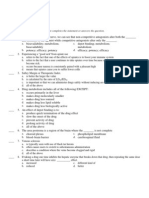Biochemical Calculations I H Segel Wiley 1976 Pdf
Url HTTP://lipodd1.ru/ content type text/html http code 200 header size 264 request size 136 filetime -1 ssl verify result 0 redirect count 0 total time 0.668862 namelookup time 0.124473 connect time 0.180211 pretransfer time 0.180245 size upload 0 size download 505819 speed download 756238 speed upload 0 download content length 505819 upload content length -1 starttransfer time 0.237697 redirect time 0 redirect url primary ip 188.127.249.199 certinfo primary port 80 local ip 149.202.93.127 local port 38068. Vaz 2106 tuning.
Segel; Biochemical calculations (2nd ed.), Wiley, New. Protein geranylgeranyl transferase type I (GGTase-I), a Ca 1 a 2 X prenyltransferase, is an essential enzyme in eukaryotes. Section I Basic Techniques of Experimental Biochemistry 1.

Designed to supplement and complement any standard biochemistry text or lecture notes, this book helps provide a balanced picture of modern biochemistry by use of elementary mathematics in understanding properties and behavior of biological molecules. It provides a balanced picture of modern biochemistry by using elementary mathematics to explore the properties and behavior of biological molecules. The text discusses such topics as: * Aqueous Solutions and Acid-Base Chemistry * Chemistry of Biological Molecules * Bioenergetics * Enzymes * Spectrophotometry and Other Optical Methods * Isotopes in Biochemistry. Sample problems are solved completely in a step-by-step manner, and the answer to all practice problems are given at the end of the book.
With Biochemical Calculations, 2nd Edition, students will gain confidence in their ability to handle mathematical problems, discovering that biochemistry is more than memorization of structures and pathways.
A novel OXA-type enzyme, named OXA-46, was found to be encoded by a gene cassette inserted into a class 1 integron from a multidrug-resistant Pseudomonas aeruginosa clinical isolate. The variable region of the integron also contained a bla VIM-1 metallo-β-lactamase cassette and a duplicated aacA4 aminoglycoside acetyltransferase cassette. OXA-46 belongs to the OXA-2 lineage of class D β-lactamases. It exhibits 78% sequence identity with OXA-2 and the highest similarity (around 92% identity) with another OXA-type enzyme detected in clinical isolates of Burkholderia cepacia and in unidentified bacteria from a wastewater plant. Expression of bla OXA-46 in Escherichia coli decreased susceptibility to penicillins and narrow-spectrum cephalosporins but not to extended-spectrum cephalosporins, cefsulodin, aztreonam, or carbapenems. The enzyme was overproduced in E. Coli and purified by two anion-exchange chromatography steps (approximate yield, 6 mg/liter).
OXA-46 was made of a 28.5-kDa polypeptide and exhibited an alkaline pI (7.8). In its native form OXA-46 appeared to be dimeric, and the oligomerization state was not affected by EDTA. Kinetic analysis of OXA-46 revealed a specificity for narrow-spectrum substrates, including oxacillin, other penicillins (but not temocillin), and narrow-spectrum cephalosporins. The enzyme apparently did not interact with temocillin, oxyimino-cephalosporins, or aztreonam. OXA-46 was inactivated by tazobactam and carbapenems and, although less efficiently, also by clavulanic acid. Enzyme activity was not affected either by EDTA or by divalent cations and exhibited low susceptibility to NaCl.
These findings underscore the functional and structural diversity that can be encountered among class D β-lactamases. OXA-type β-lactamases are a group of structurally related serine enzymes belonging to molecular class D of the Ambler structural classification of β-lactamases (, ). Enzymes of this class typically exhibit a good hydrolytic activity against oxacillin and related compounds and are usually poorly susceptible to clavulanate, being classified in group 2d of the functional classification of β-lactamases (). Although several OXA-type β-lactamases behave as narrow-spectrum oxacillinases, some of them are also capable of degrading extended-spectrum cephalosporins or carbapenems (, ). From the structural standpoint, some 60 variants of OXA-type enzymes () that are clustered into several different lineages or groups have been described (,, ).
A number of OXA-type β-lactamases are encoded by chromosomal genes that appear to be resident in some microbial genomes (such as in those of some Aeromonas spp., of some Shewanella spp., of Ralstonia pickettii, and of Pseudomonas aeruginosa) (,,,, ). On the other hand, several OXA-type enzymes are encoded by genes associated with mobile elements, which are often represented by gene cassettes inserted into integrons (). These secondary OXA-type β-lactamase ( bla OXA) genes have been reported to occur in isolates of several pathogenic species, including members of the family Enterobacteriaceae, Pseudomonas aeruginosa, Acinetobacter spp., and Burkholderia cepacia, where they can variably contribute to acquired β-lactam resistance (,, ). OXA-type β-lactamases are resistance determinants of increasing clinical importance, due to their potential activity on oxyimino-cephalosporins and carbapenems, their overall poor susceptibility to β-lactamase inactivators, and the ability that some bla OXA genes exhibit to disseminate among major gram-negative pathogens. Moreover, these enzymes represent interesting models for enzymology and protein chemistry, since their mechanism exhibits notable differences from the mechanisms of other classes of serine-β-lactamases (,, ) and since their structure-function relationships are still poorly understood. In this paper, we report on the identification and characterization of OXA-46, a new OXA-type enzyme belonging to the OXA-2 lineage, encoded by a gene cassette inserted in an integron from a multidrug-resistant clinical isolate of P.